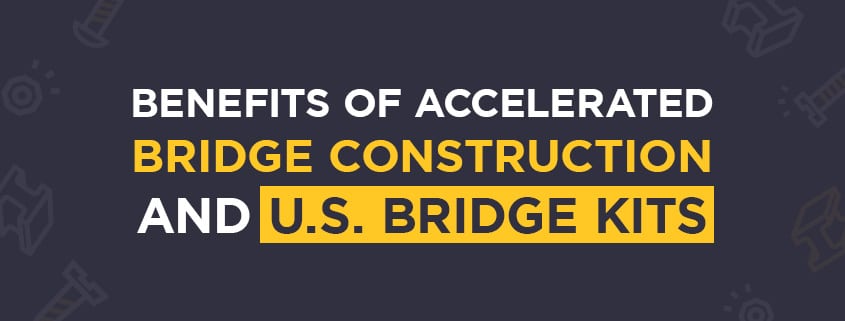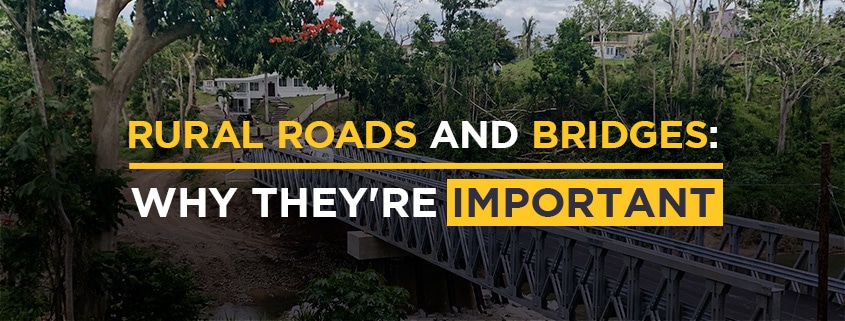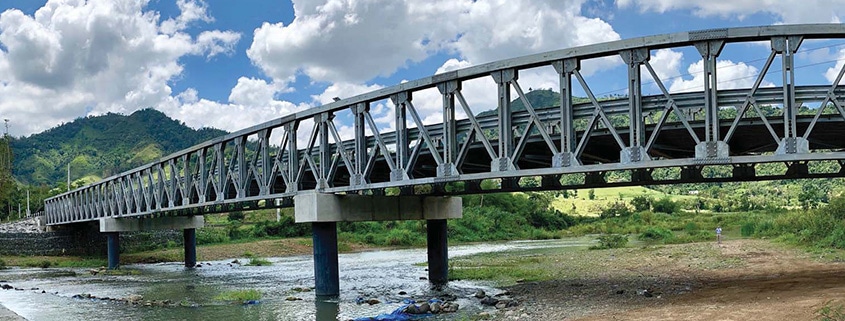Bridge construction is essential to continue rapidly improving America’s infrastructure. With innovative building techniques and effective procedures, there are constantly new cost-effective ways to increase efficiency. That’s where the benefits of accelerated bridge construction (ABC) come into play.
Accelerated bridge construction is a complete shift in how bridges are planned by fully preparing materials to be installed at the bridge site. There are several benefits of accelerated bridge construction over traditional bridge construction — above all are safety, quality, social costs, and the environmental impact.
That’s why U.S. Bridge offers Bridge Kits as a solution for a quick construction time with the same high-quality durability our bridges are known for. Below, we explain the benefits of accelerated bridge construction and why it might be right for your next bridge project. Overall, these benefits reduce bridge construction costs by shortening project time.
Most Significant Benefits of Accelerated Bridge Construction
Here are some of the benefits of accelerated bridge construction:
- Shortened bridge project delivery time
- Reduce construction impact on traffic
- Increase work-zone safety
- Prefabricated components require less maintenance
- Lower environmental impact
#1: Shortened bridge project delivery time
This is why it’s called accelerated bridge construction — it’s faster than traditional methods. However, it’s equally if not more effective than traditional building.
With precise construction management, prefabricating the bridge parts, and shipping all the parts to the job site, bridge construction time is reduced significantly. With proper planning, bridge parts can be easily installed on-site. This saves time and money throughout the process by completing the project as quickly as possible.
#2: Reduce construction impact on traffic
Highway and other roadway work zones are hazardous for both motorists and for workers. However, as the condition of America’s infrastructure continues to decline, there continues to be long closures to critical roads across the nation. Moreover, this causes delays for everyday drivers, emergency vehicles, and local businesses can suffer from altered nearby traffic patterns.
Ultimately, traffic is unavoidable for Americans, but it can be made slightly better with ABC. With faster construction times thanks to prefabricated parts, construction can move from start to finish in a more timely manner.
#3: Increase work-zone safety
With extended road and lane closures comes increased risk for traffic accidents involving motorists and workers. Each year, there are 2,000 fatal accidents in work zones. With prefabricated parts and a plan to easily construct the bridge, there is less time spent with changes in traffic patterns. Additionally, it’s beneficial for workers on site.
“Now we’re also seeing safety benefits,” Bala Sivakumar, resident ABC expert at HNTB, said to ConstructionDive.com. “It’s a lot safer to do an ABC project because [workers] are not next to traffic or 50 to 100 feet above ground tying rebar or trying to pour concrete.”
#4: Prefabricated components require less maintenance
Prefabricated bridge components are engineered and manufactured specifically for Bridge Kits — our ABC solution. Thus, these parts go through a thorough quality control process to ensure they are ready for on-site construction. While on-site work is held to a high-standard, prefabrication is done in a controlled environment and removed from environmental elements.
With ABC and a thoroughly managed process, we can build bridges that last even longer than traditional building styles.
#5: Lower environmental impact
Another plus to shorter construction time is the significantly reduced impact on the environment. With less time with heavy equipment on-site, the impact to the surrounding environment is significantly reduced. As a result, building accelerated bridge construction lends itself to environmentally-sensitive areas.
Let’s Piece it Together
U.S. Bridge proudly delivers on long-lasting bridge construction projects around the world. We regard every detail of your bridge with a high level of attention and efficiency to ensure it’s high-quality.
With our Bridge Kits, we make bridge installation easy for teams who have the labor and equipment but need manufacturing and engineering. Now, we’re delivering everything needed for bridge construction right to job sites globally.
If you’d like to know more about our Bridge Kits and accelerated bridge construction, please contact us today for a free quote.




